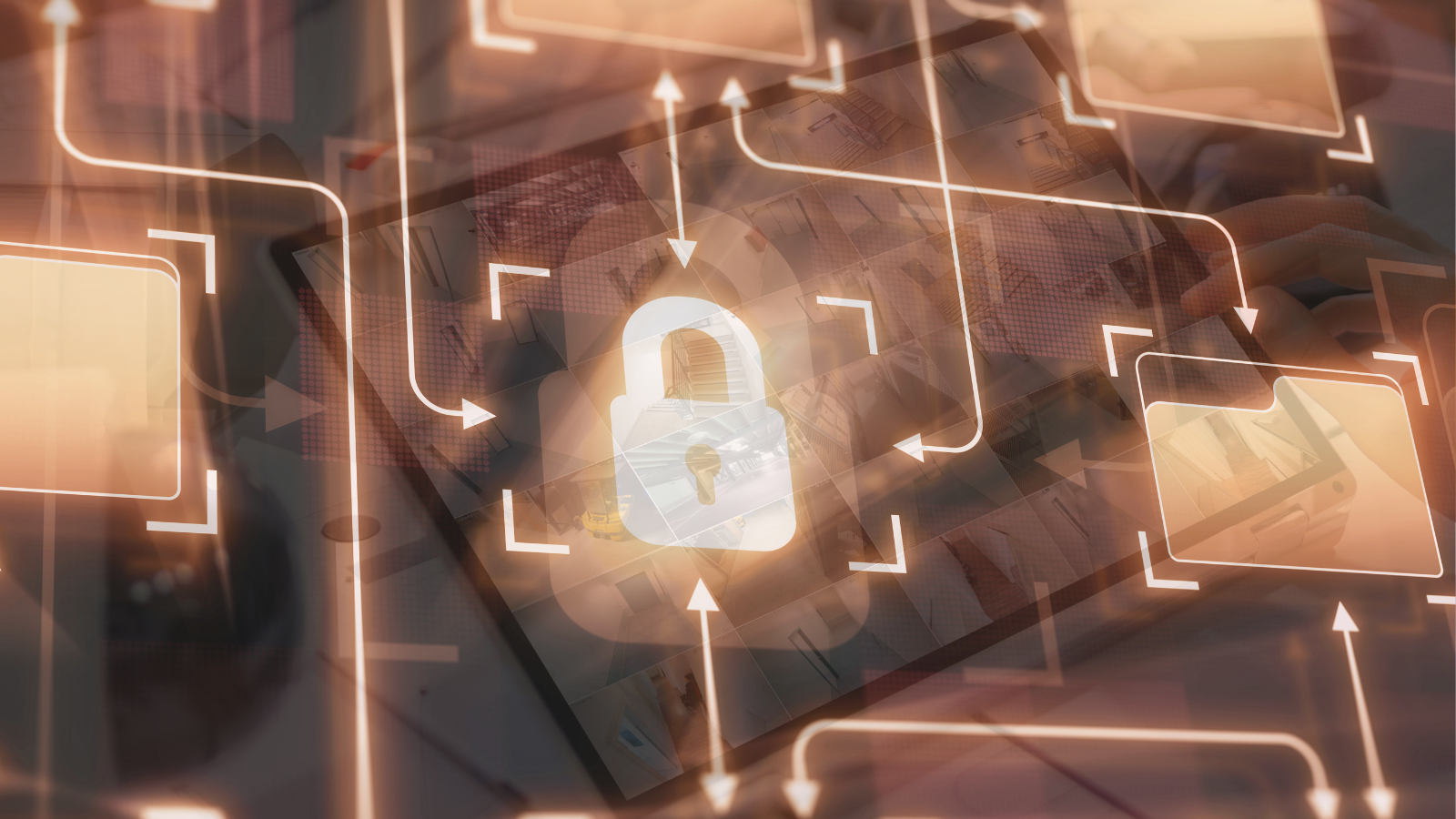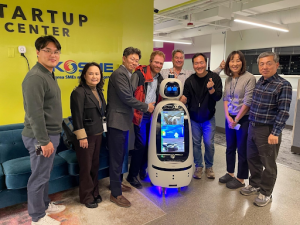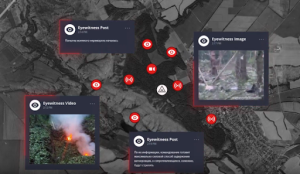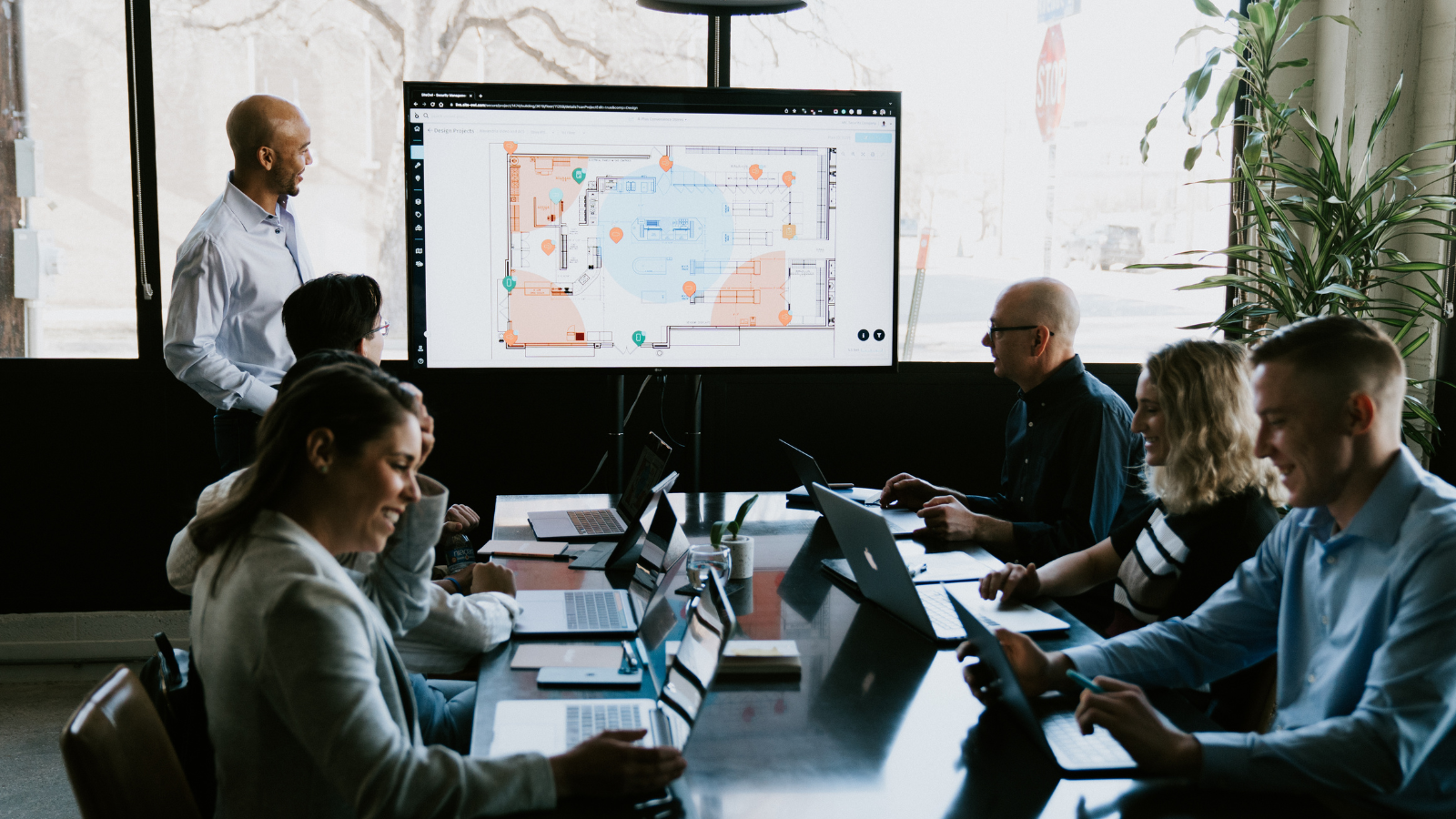Physical security is undergoing a major shift. While headlines spotlight breaches and corporate mergers, a quieter transformation is happening on the ground, driven by teams solving tough, real-world problems.
Today’s organizations are protecting more complex environments across multiple sites, with fewer resources and higher expectations. From AI-driven patrol bots to cloud-native platforms, the tools and tactics behind physical security are moving fast.
Here’s how forward-thinking teams are meeting the moment and the innovations redefining physical security.
The new physical security era
Physical security still rests on familiar goals: protect people, secure assets, and keep operations running.
But today, the landscape looks very different.
Organizations are responsible for broader, more complex environments spanning multiple campuses, hybrid workforces, and globally distributed assets. That wider footprint brings new vulnerabilities and raises the stakes for delivering consistent, scalable protection everywhere.
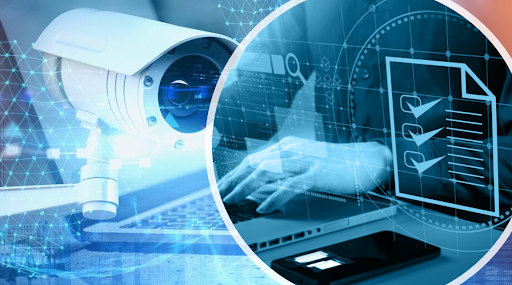
At the heart of this new era are four foundational shifts reshaping how physical security is designed, deployed, and managed:
- Autonomy and automation
Technology is taking on more frontline work, extending coverage and efficiency without adding headcount.
- Data-driven intelligence
Turning data from physical security systems into real-time insights and proactive decision-making. - Integrated ecosystems
Breaking down silos to unify video, access control, communications, and IT. - Scalability and flexibility
Designing systems that adapt quickly to new threats, locations, and operational demands.
Together, these pillars form the backbone of modern physical security, and the professionals leading this transformation are building smarter, faster, and more resilient operations.
1. Autonomy and Automation
With tighter budgets and expanding security footprints, teams are pressured to do more with less. Many are turning to autonomous technologies, from AI-powered patrol robots to intelligent video monitoring, to extend their reach without inflating costs.
Across industries, these tools are reshaping day-to-day operations:
Retail centers
AI-driven surveillance systems detect shoplifting, loitering, and after-hours activity, alerting teams in real time without requiring constant human oversight.
One standout example is Veesion, a Paris-based startup at the forefront of this transformation. Their platform leverages advanced AI to analyze CCTV footage and identify subtle body movements that suggest suspicious behavior, such as concealing items in clothing or bags. As of 2025, Veesion’s technology is in use at over 4,000 retail locations across 25 countries, with reported reductions in shoplifting incidents of up to 60%.
Corporate campuses
Autonomous security robots are redefining how corporate campuses approach safety and surveillance. These robotic units conduct routine patrols, identify anomalies, and act as visible deterrents, all while reducing dependence on traditional security personnel.
Robotnik
A standout example is Cobalt Robotics, a Palo Alto-based company acquired by Eagle Eye Networks in 2024. Their indoor security robots are equipped with over 60 sensors, including HD cameras, thermal imaging, and LIDAR.
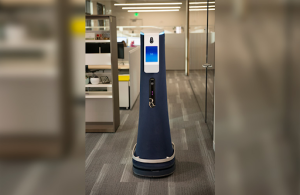
Credits: Cobalt robotics
Healthcare facilities
In healthcare settings, maintaining stringent access control to sensitive areas like laboratories and pharmacies is paramount. Touchless entry systems using mobile credentials or biometrics enhance security while promoting hygiene.
An innovative player in this space is Guardly, a Canadian startup specializing in mobile safety solutions. Guardly’s platform integrates touchless access control with real-time location tracking and mass notification systems to manage access to restricted areas efficiently and respond swiftly to emergencies.
Transportation and logistics
Integrated platforms monitor warehouse and yard activity to detect unauthorized access, cargo tampering, or safety violations, triggering immediate alerts and supporting rapid response.
An emerging leader in this space is Cloudtainer, a blockchain-enabled smart lock for cargo containers and trucks.
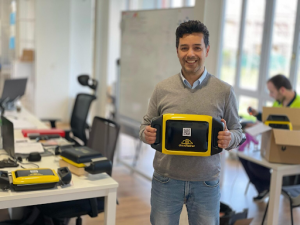
Credits: Cloudtainer
Their solution ensures end-to-end visibility by logging when, where, and by whom containers are accessed, enhancing security, reducing tampering, and improving supply chain coordination.
With innovations like these, it’s clear why 82% of security leaders say automation is essential to meet expanding coverage demands.
And momentum is only building, with the global market for security robots alone projected to exceed $39 billion by 2030, driven by real-world impact, not hype.
Autonomous security robots
AI-powered patrol bots are becoming a familiar presence across commercial properties, offering a scalable alternative to traditional guard patrols.
Companies like Knightscope are leading the way, with units capable of navigating complex environments, detecting anomalies, and sending real-time alerts to centralized command centers.

Source: Knightscope, Press Release 2025
These machines are particularly effective in large, open areas, such as parking lots, shopping centers, and campuses, where human coverage is often inconsistent or cost-prohibitive.
Knightscope recently secured over $1.2 million in new contracts, including deployments, expansions, and renewals. The company also opened a new 33,000 sq. ft. headquarters in Silicon Valley, signaling strong growth in a rapidly evolving market.
But not all patrols happen outdoors.
Indoor patrol robots
While outdoor patrol bots handle wide-open spaces, indoor environments bring a different challenge: tight corridors, multiple access zones, and sensitive workspaces that demand a more nuanced approach.
To fill the gap between static cameras and on-site guards, organizations are deploying indoor patrol robots to maintain real-time visibility throughout office buildings, corporate lobbies, and restricted areas.
DOGU, a South Korean startup, is pushing the boundaries with Patrover, an autonomous patrol robot already used in parks, police stations, factories, and construction sites.
Patrover offers advanced detection features, including fire, gas leaks, abnormal noise, and fall detection. Built for durability, it’s water- and dust-resistant and equipped for tough outdoor conditions.
Indoor patrol robots are closing visibility gaps on the ground, the next frontier is the air.
Drone detection and mitigation
Drones have become both assets and threats, making drone detection and mitigation a vital layer of autonomous security.
In the Australian outback, where 50°C (122°F) heat can fry most electronics, Skyfront developed the Perimeter 8+ WC, a drone equipped with an automotive-style water-cooling system to operate reliably in extreme conditions.
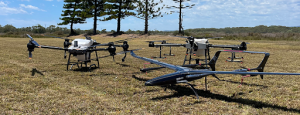
Credits: Skyfront
But harsh environments are just one piece of the puzzle. Drones are now enhancing security operations across a range of sectors:
- Urban centers: Enforcing no-fly zones and monitoring restricted airspace around critical infrastructure and large-scale public events.
- Transportation hubs: Inspecting runways, rail lines, and shipping yards for signs of tampering or intrusion.
- Border zones: Extending surveillance reach in remote or hard-to-patrol areas.
- Disaster zones: Providing real-time situational awareness to emergency teams when speed and visibility are critical.
And for intruders who slip past aerial defenses, a robotic guard dog might be waiting just around the corner.
Robot dogs have arrived
Robot dogs, also known as robotic canines, are four-legged machines designed to resemble and mimic the movements and behaviors of real dogs. They often incorporate sensors, cameras, and AI for various tasks like navigation, surveillance, or even companionship.
Boston Dynamics’ “Spot” stands out as both a viral sensation and a serious tool. Known for its dance moves, Spot is also a nimble, semi-autonomous platform that navigates complex terrain, captures high-resolution data, and performs routine inspections in environments too risky or repetitive for humans.
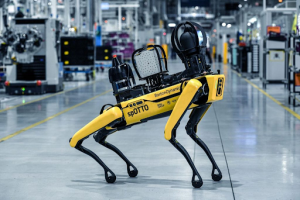
And this is just the beginning. As these machines grow more autonomous, their true value lies in turning raw data into actionable intelligence, enabling faster, smarter decisions in the field.
As autonomous tools take on more tasks, their real value comes into focus: turning raw data into smart, actionable insights that help teams respond faster and make better decisions.
2. Data-driven intelligence
Raw footage and static logs still have their place in post-incident reviews, but they’re no longer enough.
As threats grow more sophisticated and systems generate more data than ever, security teams can’t afford to wait until after something goes wrong.
Modern security systems, with numerous cameras, sensors, and access control points, generate massive volumes of data. A single high-definition security camera can produce up to 3 TB of data per month, and large facilities may operate hundreds or even thousands of them.
As video becomes the primary workload at the edge, organizations are shifting from passive surveillance to proactive risk detection.
AI-powered video analytics
AI-driven video analytics is quickly becoming one of the most impactful technologies in physical security. Innovative teams like IntelliSee are leading the charge, applying AI to enhance safety across schools, hospitals, corporate campuses, and public spaces.
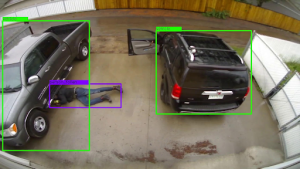
In 2023, IntelliSee partnered with a clean energy provider to secure a remote production site. Instead of replacing hardware, they layered AI over existing surveillance systems, enabling real-time threat detection without major infrastructure changes.
And that’s just one example. The real power of AI video analytics lies in its versatility across sectors:
Security & public safety
The City of Gary, Indiana, deployed AI video analytics to accelerate criminal investigations by filtering hours of footage down to key moments using facial recognition, license plate detection, and object tracking. This significantly reduced investigation times and improved response coordination.
Education
To enhance campus safety, schools are adopting AI-driven platforms like ZeroEyes, founded by former Navy SEALs to detect visible firearms in real time. The system integrates with existing cameras and alerts trained personnel at ZeroEyes Operations Centers (ZOCs) staffed by former military and law enforcement for rapid threat verification and response.
In 2023, Clovis Municipal School District in New Mexico signed a four-year, $345,000 contract with ZeroEyes. District leaders cited the platform’s ability to detect threats quickly and the value of human-reviewed alerts as key to their decision.
Data-driven intelligence in event security
Event security is evolving at the speed of an NBA fast break. AI, predictive analytics, biometrics, and smart surveillance are shifting teams from reactive responses to real-time intelligence, without slowing down the guest experience.
The mission is clear: keep people safe and operations running smoothly.
New York-based Dataminr is at the forefront of this shift. Its platform analyzes real-time signals from social media posts to public sensor data to alert security teams to emerging threats like crowd surges, violence, or suspicious activity as they unfold.
Dataminr processes massive volumes of public data, including text, images, video, and audio, and transforms it into actionable intelligence. Its clients include the U.S. Department of Defense, NATO, 20 foreign governments, 1,500 newsrooms, and two-thirds of the Fortune 50.
What makes this intelligence possible is the speed and scalability of modern cloud infrastructure. That same shift is now transforming another key layer of physical security.
From legacy systems to smart surveillance
Outdated DVRs and on-prem systems are rapidly giving way to cloud-native surveillance platforms built for scale, speed, and smarter decision-making.
Companies like Rhombus Systems and Verkada are leading the way, enabling teams to monitor security feeds remotely while using AI to detect anomalies like unusual movement patterns or unauthorized access without the need for constant, on-site monitoring.
But innovation isn’t just coming from the usual players at conferences like GSX or ISC West.
Canadian startup Solink offers video security paired with business analytics, helping organizations identify risks like break-ins or internal theft through AI-driven video review.
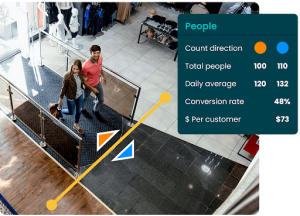
Credits: Solink
In Chile, Spot Technologies is transforming traditional surveillance into a proactive security tool through Video Analytics as a Service, automating operations and converting raw footage into real-time, actionable insights.
Latin America, in particular, is emerging as a hotspot for smart surveillance adoption. With rapid urbanization, rising security needs, and increased investment in digital infrastructure, the region is primed for growth.
Moreover, the smart cities market in Latin America is expected to reach a projected revenue of $185.0 billion by 2030. This surge is attributed to rapid urbanization, government-led smart infrastructure initiatives, and rising investments in IoT and AI technologies.
Meanwhile, in India, the team at AIRPiX is making it easier to keep eyes on construction projects, no matter how remote.

Credit AIRPiX
By layering in AI-based video analytics, AIRPiX helps automate the monitoring of safety, compliance, and daily operations, so teams can stay on top of progress without being on-site.
For construction companies managing projects across the country, it’s a smarter, more connected way to maintain visibility, reduce risk, and keep everything moving forward.
These innovations highlight a broader trend: surveillance systems are no longer just about watching, they’re about enhancing operations and connecting the dots across an organization.
3. Integrated ecosystems
As risks become more interconnected, so must the tools used to detect, manage, and respond to them. Fragmented systems slow down response times, create information gaps, and make it harder for security teams to see the full picture during critical incidents.
Here’s how the industry is moving toward tighter integration:
Unified Security Platforms
When every second counts, fragmented tools simply don’t cut it. Organizations are now embracing unified security platforms integrated solutions that combine video surveillance, access control, alarms, and analytics into a single, intuitive interface.
With live feeds from cameras, sensors, and access points all feeding into one dashboard, teams can assess incidents from every angle and coordinate an immediate, informed response.

As Mike Lahiff of the Forbes Technology Council put it: “With the addition of AI, physical security solutions are no longer passive they’re actively intelligent devices that monitor, analyze, and react in real time.”
Legacy leaders like Genetec and LenelS2 continue to anchor the enterprise space with comprehensive platforms that unify surveillance, access control, and intrusion detection under one integrated framework.
Yet some of the most compelling momentum is coming from a new wave of innovators embracing cloud-native agility.
YourSix, for example, is driving full cloud adoption with a platform that unifies video and access control across multi-site environments.
Purpose-built for distributed teams, it enables centralized monitoring, real-time incident management, and flexible deployment, making it an ideal fit for organizations looking to scale quickly.
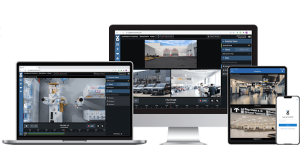
Credit YOURSIX
As investor and industry analyst Emery Waddell puts it, “YourSix’s team of industry experts and technologists delivers a modern, cloud-native physical security solution that uniquely meets the demands of a rapidly emerging ‘as-a-service’ market.”
On the integrator side, Qumulex is building for flexibility with a hybrid-cloud platform that merges video and access into a single, modern interface. Designed for both integrators and end users, it brings a scalable approach to security, without forcing a full rip-and-replace of legacy systems.
Together, solutions like these represent a strategic shift in how the industry approaches growth, risk, and operational complexity. To keep pace, security systems must be as agile as the environments they protect.
4. Scalability and flexibility
Static security models can no longer keep pace with today’s dynamic environments. Organizations need systems that can scale effortlessly, pivot to emerging threats, and adapt to operational changes, without requiring a full overhaul every time priorities shift.
According to a 2024 Deloitte report, 72% of enterprise security leaders say their current systems are too rigid to support future growth. As enterprises expand across locations, adopt hybrid work models, and face increasingly complex risk landscapes, the demand for agile, future-ready infrastructure is only accelerating.
Here’s how the industry is meeting the moment:
Cloud-native infrastructure
Legacy on-prem systems are giving way to cloud-native platforms designed for speed, scale, and centralized control. This shift is reshaping industries, including highly regulated sectors like pharmaceuticals.
While the pharmaceutical industry has traditionally relied on in-house IT and local data centers, that model is evolving. U.S. pharma companies are increasingly migrating workloads to the cloud, often through hybrid environments that blend legacy infrastructure with modern capabilities.
Cloud adoption in pharma remains strong, though it still lags behind some other sectors. For perspective, an estimated 95% of businesses across industries were using the cloud in some capacity.
Companies like Verkada and Eagle Eye Networks are accelerating this shift by making it easy to deploy cameras, sensors, and monitoring tools across multiple locations, all managed through a secure, centralized cloud dashboard.
Mobile-first access control
Access control is going digital and mobile. As organizations grow more distributed and workforces become increasingly mobile, traditional systems like plastic badges and wall-mounted readers are showing their age.
Mobile-first access control is stepping in as a smarter, more secure, and more flexible alternative.
One of the leaders in this shift is Openpath, whose mobile-native platform replaces physical cards with encrypted smartphone credentials. With a simple tap, wave, or automatic Bluetooth recognition, users can unlock doors supporting both convenience and touchless entry. According to a recent IBM Security report, organizations adopting mobile credentialing are seeing measurable benefits:
- Reduced risk: Because users need physical access to a device, stolen credential attacks are more challenging to pull off than traditional access control.
- Lower cost: Mobile access requires less administration, meaning it’s less expensive to operate and maintain. Administrators can more easily add and delete users than with traditional access management.
- Easier to create temporary credentials: With mobile credentialing, system administrators can now more easily and quickly create temporary credentials, such as a contractor or vendor.
This trend isn’t limited to North America. In Dublin, Ireland, the team at Alleion is developing a mobile-first access control solution tailored to modern buildings and co-working spaces.
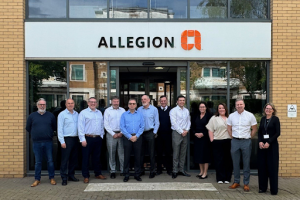
Credits: Allegion
Their platform enables secure, app-based entry for tenants, staff, and guests, integrating with building management systems to support a seamless, connected experience across doors, elevators, and common areas.
Future of physical security starts with lifecycle management
Physical security isn’t just about walls, locks, or cameras anymore. It’s a fast-moving, interconnected ecosystem that demands smarter technology, faster insights, tighter integration, and the ability to adapt at any moment.
At the heart of this transformation is lifecycle management.
From initial planning and deployment to daily operations and long-term upgrades, it ensures that every system, device, and process works in sync and stays future-ready.
Technologies like AI, cloud platforms, mobile access, and intelligent analytics offer immense potential. But without a unified strategy to manage them across their lifecycle, even the most advanced tools risk becoming siloed, outdated, or underused.
By providing a centralized platform to plan, deploy, and manage every aspect of physical security, SiteOwl helps teams stay ahead, eliminating blind spots, reducing downtime, and making upgrades simpler and more strategic.
Ready to modernize your security strategy?
Schedule a demo with SiteOwl to see how lifecycle management can streamline your operations and strengthen your security from day one.

Su Subburaj
Su is SiteOwl's CMO and leads all marketing and communications. Su has extensive strategy and management consulting experience and previously consulted for 3Sixty Integrated where she gained an in-depth understanding of digital transformation challenges in the physical security industry. When not working on strategies to expand SiteOwl's footprint, Su enjoys bad karaoke, weightlifting and traveling.
